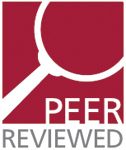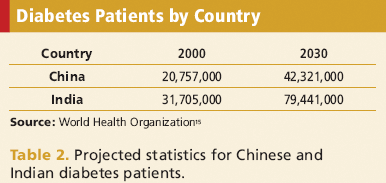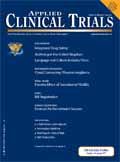Language & Culture in Global Clinical Trials
Applied Clinical Trials
With more clinical trials conducted overseas, sponsors are facing new obstacles.
Many emerging countries, such as India, China, Mexico, Brazil, and Russia, are rapidly becoming prominent outsourcing locations for clinical research. A wider availability of patients, low operational costs, and positive patient attitudes toward clinical trials has driven the trend. These developments have been acknowledged by the major regulatory agencies; data generated in these regions now represents a growing portion of regulatory submissions. For example, the FDA's Office of International Programs has extended its focus on emerging markets, with formal offices set up in China and India to monitor and oversee developments.1 As the number of clinical trials outsourced to emerging regions continues to rise, 65% of FDA-regulated clinical trials conducted by major pharmaceutical companies are expected to be outsourced to emerging countries by 2012,2 sponsors have to address several new challenges.

Language issues
Adequately meeting specific regulatory requirements in each country and addressing the vast linguistic and cultural differences among various patient populations are among the biggest challenges sponsors must face. Language and culture are also important factors in dealing with local regulatory authorities. Regulatory documents commonly must be translated into the country's official language, and approval must often be translated back for other regulatory authorities. Any differences in regulatory processes and specific translation requirements must be addressed.
Most clinical sites are located in major cities, and as a result of urbanization trends, patient populations often include several ethnic minorities who speak languages other than the country's official language. Although this results in greater genetic diversity, it further complicates the issue of linguistic and cultural barriers. To ensure success, therefore, the translation of clinical trial documents must be performed by experts who are native speakers of the required language, are familiar with the culture, and have a background in clinical research. In addition, partnering with a local CRO or language service provider with experience in that country will better ensure regulatory approval.

The translation of clinical trial documents involves more than just simple translation from a source language into a target language. In addition to translating documents for regulatory authorities, patient-related materials and informed consent forms must be carefully translated into the patient's native language, and the text must be culturally adapted for the target subject population. Following initial translation, the text undergoes a review process performed by a separate group of expert translators. The review is then back translated to ensure that the original meaning has not been "lost in translation." To contain costs and increase translation efficiency, professional translators create or refer to existing translation memory (TM) or glossaries. These contain an archive of preferred clinical trial terminology and accepted medical terms that are commonly used by the majority of professional translators in a particular language. However, there are languages in which these terms are less defined. For example, researchers in one South African study found that language created barriers to informed consent due to a lack of established local words for terms such as "randomization" or "placebo."3 In fact, one of the most common problems in international trials is related to inaccuracies in the translation of informed consent forms.
In addition to creating barriers to informed consent, linguistic and cultural differences can affect patient reporting of disease symptoms and adverse events, and interfere with the diagnosis or treatment of patients participating in clinical trials. Several clinical studies have demonstrated that a patient's language and culture influences their perception of disease and symptoms. These factors must therefore be taken into account in the interpretation of patient data and in the translation of all patient-related materials.
Clinical studies commonly require patients to fill out various types of study questionnaires such as quality of life questionnaires or health assessment questionnaires. It is essential, however, that these questionnaires are linguistically validated and culturally adapted to ensure accuracy of patient information. Inaccuracies can result in changing the outcome of a study, or even cause a study to be invalidated. Rating scales associated with these questionnaires may make this process substantially more difficult, as even everyday items or phrases may have significant differences. One study, aimed at culturally adapting HAQs involving rheumatoid arthritis patients at Ankara University in Turkey, reported that several linguistic changes needed to be made to the translated questionnaires to account for cultural differences, (e.g., "shampoo your hair" needed to be modified to "wash your hair," because both shampoo and soap were used in Turkey for washing hair at that time).4
Another study focused on diagnosing clinical depression in geriatric patients in Malaysia reported that one of the questions in the study questionnaire had absolutely no discriminatory value in differentiating cases of depression among Malay patients: "Do you prefer to stay at home, rather than going out and doing new things?" Since in Malaysia the main emphasis is on family living rather than individual lifestyle, patients had a higher tendency to give positive response to this item, despite their depression.5 As a result, study questionnaires must often undergo a series of reviews to address linguistic and cultural barriers. Ultimately this means greater time and expense, as translation experts must work with patients and physicians in order to ensure that the information in the translated versions is as accurate and effective as in the original.
To make the issue more complex, some countries have multiple translation requirements. In India, for example, Hindi (spoken by 30% of the population) and English (fluency in 5% of the population) are two of many official languages. In addition to over a dozen official languages recognized by the Indian government (some statistics quote 22), there are many more regional languages recognized at the state level. Furthermore, depending on the patient population, there are hundreds of dominant languages and dialects that must be considered. As a result, informed consent forms and other patient materials frequently need to be translated into a minimum of eight to 10 regional languages. In Singapore, Malay, Mandarin Chinese, Tamil, and English are all official languages. In addition to these languages, there are a significant number of speakers of Hokkien, Cantonese, and other minority languages. Thus, identifying the patient population and the respective translation requirements requires an adequate knowledge of the country and its people.
In contrast, in Russia the majority of the population speaks Russian, the only official language. Although for the most part this simplifies the translation process, there are many Russian ethnic minorities and indigenous populations for whom Russian is a second language. As a result, teaching is presently conducted in 75 different national languages throughout Russia.6 Furthermore, there are several regional dialects, divided according to their location to Moscow. Although, in major urban centers where clinical sites are located, these differences are less of an issue; sponsors must consider the particular patient population. Brazil is another country that has a single language translation requirement: Brazilian Portuguese. Although the country's official language is spoken with only slight regional variation, other minority and indigenous languages may be dominant among certain ethnic groups, including several Amerindian languages. For example, Tupí is one of the most dominant indigenous languages along the coast of Brazil, and Guaraní is spoken by close to four million people in Paraguay and Brazil.7 Spanish is a dominant minority language, especially near the borders, composed of approximately one million speakers. In addition, there are several other minority languages such as Korean, Italian, and Japanese spoken by large immigrant populations.
Thus, even in countries where there is only one official written language, patient populations may be composed of different ethnic minority groups who speak dialects or languages other than the official national language. This is well demonstrated in China, where, although Mandarin Chinese is both the only official and written language; there are several other dominant languages spoken throughout the country, such as Shanghainese (90 million speakers), Min (50 million speakers), Xiang (25 million speakers), and Cantonese (70 million speakers). In addition to these, there are numerous other minority and indigenous languages. Moreover, there are two different character types of written Mandarin, and depending on the patient population, translators must know which one to use. In mainland China, the original or traditional Mandarin characters have been changed to simplified Mandarin characters, a more simplified writing system. However, Chinese speakers in Taiwan and Hong Kong still use traditional characters. This is further complicated by pre-existing linguistic differences between respective users of simplified and traditional characters.
In most Latin American countries, despite the common official language, Spanish, there are many spoken variations. For example, Mexican Spanish differs significantly from Argentine Spanish, and both in turn differ from Castilian Spanish. In addition, there are regional variations among Spanish speakers even within the same country. A look at differences among regional dialects spoken throughout Mexico alone demonstrates the complexity of this issue. Currently, there are more than 50 native Mexican languages considered to be Mexican Spanish dialects.8 Moreover, some patient populations may have limited Spanish proficiency, thus other indigenous and minority languages must also be considered.
In many African countries the issue of language is especially complicated. In South Africa, for example, there are 11 official languages including English and Afrikaans. Among these, Zulu is the most dominant with approximately 10,000,000 speakers. In addition to 11 official languages, there are several other dominant dialects and languages depending on the particular region and ethnic group. Senegal, although not as established in clinical research as South Africa, currently conducts a significant amount of research in collaboration with Western institutions. In Senegal, although French is the only official language, there are several other—14 in total—national languages. Among these, Wolof has the greatest number of speakers and is native to a third of the population. In addition, there are other minority languages such as Portuguese Creole and Cape Verdean Creole that must be considered.
Identifying the target patient population and translation requirements is only the first step in addressing language barriers. Ensuring quality and accurate translation is just as crucial. Inconsistent or poor translations have been known to cause serious problems, including delays in regulatory approval and interference with obtaining informed consent and patient data. These issues, however, can be overcome to a large extent with proper clinical trial management. According to current international guidelines, sponsors must employ professional translators, particularly when translating patient information and informed consent. By partnering with language service providers that have experience in a specific country or region, sponsors can ensure that any linguistic barriers are properly addressed (see Table 1).

Cultural factors and medical practices
Although each country's culture should be considered separately, there are several common factors among countries in emerging regions. For example, in most emerging countries patients traditionally hold their physicians in high regard. Despite the fact that this strong relationship greatly facilitates patient recruitment in these countries; it must also be considered for other effects on clinical research. For example, as a result of this trust, patients tend to accept their physician's recommendation to enroll in a clinical trial without questioning or fully discussing other potentially beneficial treatments. Although foreign sponsors must make an effort to clearly communicate their expectations to ensure that ethical standards are maintained, they must also respect the cultural differences and the different approach to practicing medicine in other countries.
Another example of this is the censoring of medical information by physicians. It is common in many emerging countries for physicians to withhold "bad news" from their patients because it is considered to negatively affect the outcome of a patient's treatment. As a result, terminally ill patients are not told of their disease status, and patients may not know all of the risks associated with clinical trial participation. In many countries this information is disclosed only to family members who are also more likely to be responsible for deciding the patient's medical treatment. While such practices are widely accepted, they do not comply with the informed consent procedures set by countries that are more established in clinical research.

In addition, cultural factors often have been shown to have an impact on patients' perception and the reporting of symptoms or adverse effects. For example, several studies have indicated that there are significant differences in the perception of pain due to cultural attitudes. Cancer studies involving Asian American patients indicate that Asians tend to underreport pain due to their belief that they must accept it as part of their illness.9 Similarly, some studies have indicated that Russian patients tend to underreport pain due to the belief that it is a show of strength.10
Cultural factors may also influence who receives healthcare in some societies. In Brazil, for example, societal norms dictate whether a woman participates in a clinical trial—the decision is often made by male family members such as a father or a husband. In a conservative Islamic society such as Senegal where homosexuality is taboo, it is often difficult for men infected with HIV, or consequently TB, to obtain healthcare without facing discrimination.11
Some cultural beliefs may directly interfere with ethical standards and pose a serious dilemma for foreign sponsors. For example, unlike most Western cultures, in the Middle East many patients may consider the signing of an informed consent form unnecessary as verbal agreements are already binding.12
Understanding cultural factors will also prevent sponsors from overlooking other aspects of local life that will impact subject recruitment. For example, in India, agricultural workers form a large section of society, but since their income is low and employment irregular, they must maximize all opportunities to support themselves and their families. Official figures suggest that over 70 million people are agricultural workers, primarily in small towns and villages.13 For such individuals, harvesting season is an important period, as they work jointly with their families to earn income that may need to last the whole year. As a result, during harvesting season, patient inflow to hospitals tends to be less, thereby leading to slower subject recruitment, and disruption of follow-up visits if the events fall during those days. However, experienced investigators can make use of staff, translators, study nurses, and other personnel who can understand subjects' cultural differences to devise alternative arrangements that take into account such factors.
In many emerging markets, free or subsidized medical treatment is not available, participating in a clinical trial may be seen by these subjects as a means to ease some of their additional economic burdens to access healthcare. While it is important to acknowledge such socioeconomic factors, care must be taken not to assume that those who are poor and illiterate lack common sense or intelligence. Furthermore, ethically, every effort must be made to provide them with information that they can understand so that they can participate in trials of their own free will. It must be remembered that these potential subjects have an equally strong commitment to their life and families as those who are richer and more educated. If they are not convinced, then as with other potential subjects, they will not participate in the trial.
Urbanization and disease
A growing percent of the population in many emerging countries currently lives near or in a major city as a result of urbanization. Rapid urbanization transforms the environment as people compete for limited natural resources and space, leading to overcrowding and poor hygiene. Consequently, this impacts both lifestyle and disease trends in these countries. The incidence of chronic diseases, such as cardiovascular diseases, malignant tumors, and mental disorders in urban areas is higher than that in rural areas and is on the rise.
For example, according to the World Health Organization, 80 percent of people with diabetes now live in low- and middle-income countries.14 India and China currently have among the largest and fastest growing numbers of diabetes patients. Factors such as unhealthy diet, a sedentary lifestyle, smoking, and alcohol abuse have contributed to this disease trend in emerging regions.
In addition, many patients in emerging countries may have limited access to adequate healthcare. As a result, diseases associated with poverty persist. Moreover, the incidence of infectious diseases such as HIV, TB, and malaria continue to be a serious problem in emerging countries where large numbers of infected patients cannot afford treatment. A look at statistics in many African countries, as well as countries such as India and Brazil, reflects the immensity of the problem, and dwarfs the impact in North America and Western Europe.
More recently, several emerging countries have initiated government programs to make treatment more affordable. In Brazil, where only about 20 percent of the population has health insurance, the government has increased reimbursement and free drug coverage for patients in the public healthcare sector.16 Moreover, due to the high cost of pharmaceuticals, many emerging countries strongly support the use of generics. Balancing the cost of developing and testing new drugs with making new treatments available to more patients that have lower economic status is a serious challenge for foreign sponsors; however, it is one that must be reconciled.
Socioeconomic factors and informed consent
Regulatory delays in clinical trials are most commonly due to problems with informed consent. In large part, this is because many sponsors are not fully aware of the significant barriers that exist among many clinical trial subjects in emerging regions. International standards for informed consent require that forms be provided at a 4th to 8th grade comprehension level.
However, in the case of illiterate patients, there are often country-specific requirements. For example, in Mexico illiterate subjects are commonly asked to sign a second consent form that requires the signatures of two witnesses.17 Since 2008, new standards were set for trials conducted in Latin America: foreign sponsors must use competent professional translators to translate informed consent and persons independent of the clinical trial must verify that enrolled patients understand clearly the content of the informed consent form.18 In India, illiterate subjects must be accompanied by a literate relative who serves as a witness during the informed consent process.19 Furthermore, because it is such a multilingual country, sponsors must provide patients with a verbal explanation in their own language prior to signing a written informed consent form.
In addition, new multimedia tools are available in countries where there are large populations of illiterate patients to help overcome barriers associated with limited education. For example, the "speaking book," a sound recording with pictures that explains to the potential participant their rights and role in the clinical trial, is currently in the process of being implemented in several African countries such as South Africa.20
The issue of limited medical access further complicates the informed consent process. Many patient populations that live in conditions of poverty may have little or no access to any medical treatment. Thus, participating in clinical trials is the only opportunity for treatment. Furthermore, clinical research often provides patients access to new, modern treatments that would otherwise not be available to them. A look at the national statistics of the percent of people living at or below the poverty line in many emerging countries—India (between 25% and 33%), Philippines (up to 30%), Mexico (almost 50%), or Brazil (around 25%)—reflects the immensity of the challenge of ensuring the rights of patients with limited healthcare access and resources.21
Clinical research criteria dictate that patients must be adequately nourished to enroll in a trial. This eliminates those living in extreme poverty. However, since most clinical trials are conducted in urban areas where there are large areas of poverty, sponsors must consider that significant numbers of enrolled subjects are living at or near the poverty line. Furthermore, sponsors must also keep in mind that despite the fact that most international sites have adopted International Conference on Harmonisation, Good Clinical Practice standards, regulatory and ethical environments are continually evolving. Finally, significant differences in regulatory processes among emerging regions remain, and standards set by countries more established in clinical research may not apply everywhere.
Recommendations and conclusion
In the near future, it is expected that emerging countries will conduct a greater number of clinical trials than previously established countries such as the United States, Canada, and Western Europe. The advantages of outsourcing to emerging regions are clear: reduced costs, faster, more successful subject recruitment, and access to larger numbers of qualified patients. In addition, the spectrum of diseases in many emerging countries has grown to include many diseases prevalent in more developed countries.
The challenge remains primarily in addressing regulatory differences, and overcoming linguistic and cultural barriers. Foreign sponsors have the additional responsibility of ensuring that international ethical standards are maintained. By taking language, culture, and socioeconomic factors into account, sponsors are also ensuring that the public image of clinical research in that country will remain positive. Ultimately, providing cutting edge treatments and helping to improve healthcare in emerging regions is mutually beneficial. In addition, these countries are becoming important new markets for biopharmaceutical products. However, in order to overcome present barriers in global trials, companies must establish a local presence; work with reputable investigators and sites; and partner with language service providers and CROs that have experience in a particular area.
Karen Politis Virk* is Director of Biotech and Pharma Research at Language Connections, 2001 Beacon Street, Boston, MA, e-mail: [email protected]. Faiz Kermani is President at Global Health Education Foundation, Habsheim, France, e-mail: [email protected].
*To whom all correspondence should be addressed.
References
1. Food and Drug Administration, "Office of International Programs: China and India," http://www.fda.gov/AboutFDA/CentersOffices/OC/OfficeofInternationalPrograms/default.htm.
2. Tufts Center for the Study of Drug Development, "Outlook 2009," http://csdd.tufts.edu/_documents/www/Outlook2009.pdf
3. A. Karim and S. Salim, "Globalization, Ethics, and AIDS Vaccines," Science, 288 (5474) 2129 (2000), http://www.columbia.edu/itc/hs/pubhealth/p9408/readings/abdool_karim_2000.pdf .
4. A. Küçükdeveci, et al., "Issues in Cross-Cultural Validity: Example From the Adaptation, Reliability, and Validity Testing of a Turkish Version of the Stanford Health Assessment Questionnaire." Arthritis Care & Research. 51 (1) (2004), http://onlinelibrary.wiley.com/doi/10.1002/art.20091/full
5. E. E. Teh and C. I. Hasanah,"Validation of Malay Version of Geriatric Depression Scale Among Elderly Inpatients," (2004), http://priory.com/psych/MalayGDS.htm .
6. Parliamentary Assembly Consiel d l'Europe "Endangered Uralic Minority Cultures," (September 25, 1998), http://assembly.coe.int/Mainf.asp?link=/Documents/AdoptedText/ta98/ERES1171.htm .
7. "Native American Languages," Columbia Electronic Encyclopedia, 2011, http://www.answers.com/topic/native-american-languages.
8. J. Schmal, "The Linguistic Diversity of Mexico," Houston Institute for Culture Educational Literature, http://www.houstonculture.org/mexico/ling.html .
9. E. Im, Y. Liu, Y. Kim, and W. Chee, "Asian American Cancer Patients Pain Experience," Cancer Nursing: An International Journal for Cancer Care; 31 (3) E17-E23 (2008), http://www.journals.lww.com/cancernursingonline/Abstract/2008/05000/Asian_American_Cancer_Patients__Pain_Experience.16.aspx.
10. RM Consulting, "The Healthcare, Pharmaceutical, and Clinical Trial Environment in Russia," Sribd, 2006, http://www.scribd.com/doc/18937694/Clinical-Trials-Russia.
11. FHI, "Connecting an At Risk Population with Services in Senegal," January 2010, http://www.fhi.org/en/CountryProfiles/Senegal/res_MSM_Services_Senegal.htm.
12. H. Silverman, "Enhancing Research Ethics Capacity: Implications for Protection of Research Subjects, Avoiding Exploitation and Achieving Global Health," Middle East Fertility Society Journal, 10 (2) 105-109 (2005).
13. K. Padhi, "Agricultural Labor in India: A Close Look" Orissa Review, Feb/March 2007, 23-28, http://knowledgecentre.drwa.org.in/green/pdffiles/page23-28.pdf.
14. World Health Organization, website entry, "Diabetes," http://www.who.int/diabetes/en/.
15. World Health Organization, website entry, "Country and Regional Data," http://www.who.int/diabetes/facts/world_figures/en/index5.html.
16. F. Kermani, "Regional Roundup: Brazil," Contract Pharma, (2005), http://www.contractpharma.com/articles/2005/10/regional-roundup-brazil.
17. J. Fiuza, "Strategies for Implementing Trials in Latin America," EPC Clinical Development, (2006), http://www.pharm-olam.com/pdf/EPC-Winter-2006-LA.pdf.
18. R. Chin and L. Safar, "Clinical Trials Go Global: Next Stop, Latin America," The Free Library (2009), http://www.thefreelibrary.com/ Clinical trials go global: next stop, Latin America-a0209407817.
19. A. K. Sanwal, et al., "Informed Consent in Indian Patients," Journal of the Royal Society of Medicine, 89 (4) 196–198 (1996), http://www.ncbi.nlm.nih.gov/pmc/articles/PMC1295734/pdf/jrsocmed00056-0020.pdf.
20. O. Kloiber and N. Duncan, "New Speaking Book on Clinical Trials Launched for Low Literacy Areas," World Medical Association, (2008), http://medical.bizcommunity.com/Article/196/148/29464.html.
21. Central Intelligence Agency, "People and Economics; Asian Countries; Population/Poverty/Literacy," World Factbook, https://www.cia.gov/library/publications/the-world-factbook/geos/in.html.
